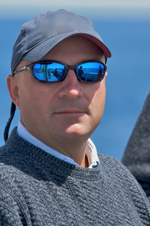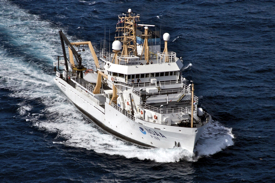VIMS professor leads deep-sea survey in response to Gulf oil spill
The National Oceanic and Atmospheric Administration (NOAA) has selected Professor Tracey Sutton of the Virginia Institute of Marine Science to lead a survey of deep-sea life in the Gulf of Mexico as part of the long-term scientific response to last year’s Deepwater Horizon oil spill.

The survey is part of the Natural Resource Damage Assessment (NRDA) process, one component of NOAA’s Damage Assessment, Remediation, and Restoration Program. DARRP is designed to restore coastal and marine resources injured by oil spills, hazardous releases, and vessel groundings. It was established in 1992 as part of the Oil Pollution Act of 1990, itself a response to the 1989 Exxon Valdez spill.
During the NRDA process, NOAA selects science teams to conduct studies that NOAA will use to determine and measure spill-related injuries to natural resources and their human uses.
NOAA selected Sutton to lead the NRDA pre-assessment survey of the Gulf’s deep-water habitats based on his expertise in the ecology and classification of deep-sea fishes and his experience in mounting deep-sea expeditions. Sutton was a lead scientist for two deep-sea projects during the decade-long Census of Marine Life (2000-2010)—an unprecedented international collaboration to assess and explain the diversity, distribution, and abundance of life in the oceans—and has done previous work on the Gulf’s deep-sea fishes.
“NOAA realized that there’s very little information available for what lives deep in the Gulf,” says Sutton, “especially for depths between 700 and 1,400 meters where there was a large plume of oil from the spill. Our job is to gather that information so that they can model the spill’s potential impacts.”
Assessing the monetary and environmental impacts of the spill is an ongoing legal process that involves BP (“the responsible party”) and numerous government agencies. These federal and state “trustees” include NOAA, the U.S. Department of the Interior, the U.S. Fish and Wildlife Service, and natural resource agencies from the five states directly affected by the spill: Texas, Louisiana, Mississippi, Alabama, and Florida.
Sampling Expeditions
 Sutton has already sailed on three sampling expeditions to
the deep waters of the northern Gulf of Mexico, and will be Chief Scientist on
at least two additional cruises planned for this year. The trips are aboard the
208-foot NOAA vessel Pisces, a
state-of-the-art research ship. Eight to ten additional cruises are taking
place aboard the Meg Skansi, a research
vessel contracted from Continental Shelf Associates of Houma, Louisiana. Sutton
has worked with Applied Science Associates, NOAA’s primary contractor for the
assessment, to outfit both vessels with the gear needed to sample fish, shrimp,
and squid from the Gulf’s deep waters.
Sutton has already sailed on three sampling expeditions to
the deep waters of the northern Gulf of Mexico, and will be Chief Scientist on
at least two additional cruises planned for this year. The trips are aboard the
208-foot NOAA vessel Pisces, a
state-of-the-art research ship. Eight to ten additional cruises are taking
place aboard the Meg Skansi, a research
vessel contracted from Continental Shelf Associates of Houma, Louisiana. Sutton
has worked with Applied Science Associates, NOAA’s primary contractor for the
assessment, to outfit both vessels with the gear needed to sample fish, shrimp,
and squid from the Gulf’s deep waters.
Sutton says the team’s ultimate task is to describe the composition and diversity of the northern Gulf’s deep-sea community, and how it might change through time and space.
To study how the deep-sea community might differ from place to place, the team’s sampling stations are spread across a grid in the northern Gulf that stretches from the panhandle of Florida to western Louisiana.

